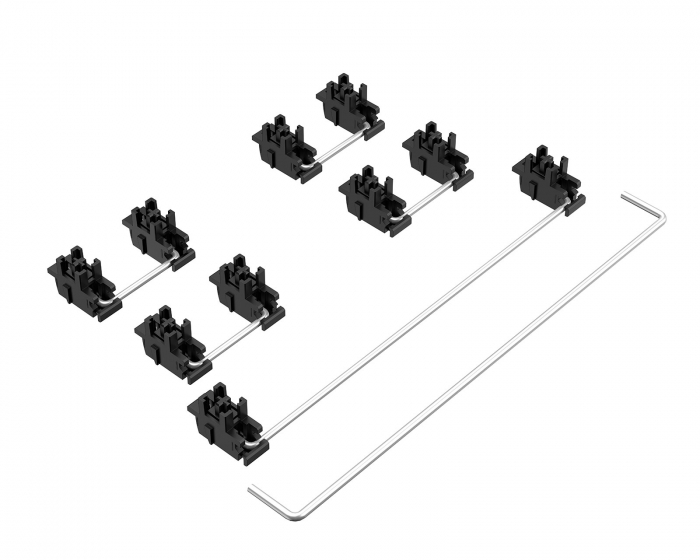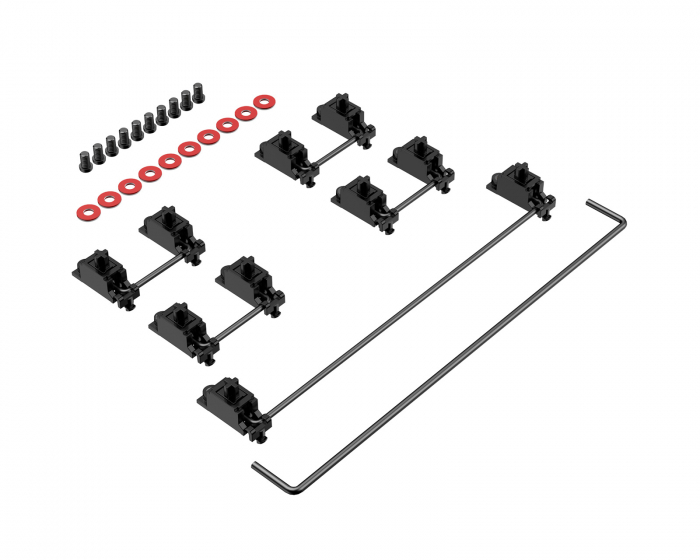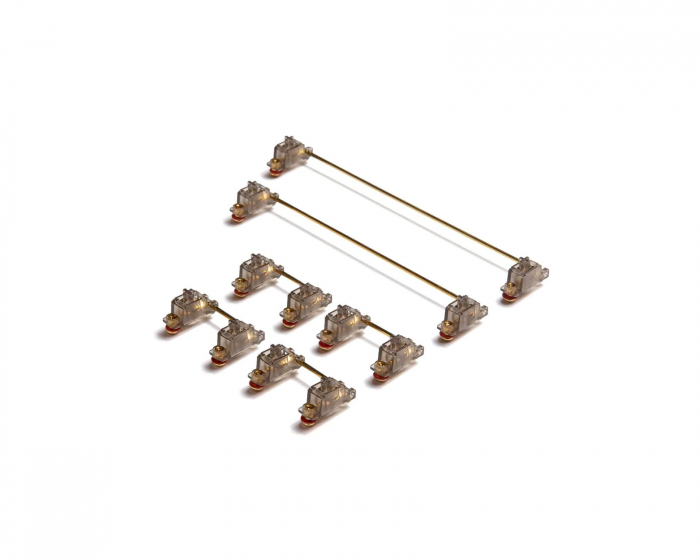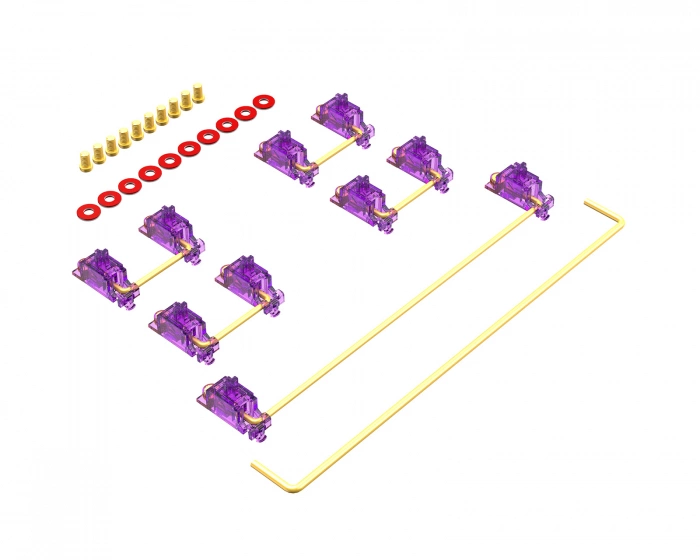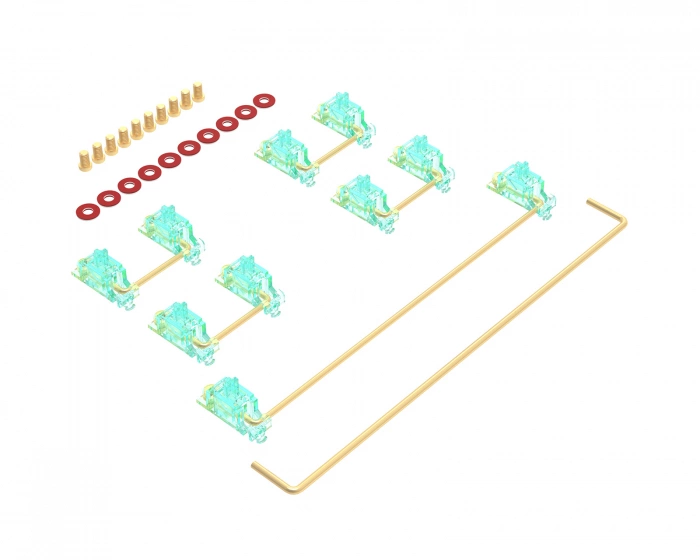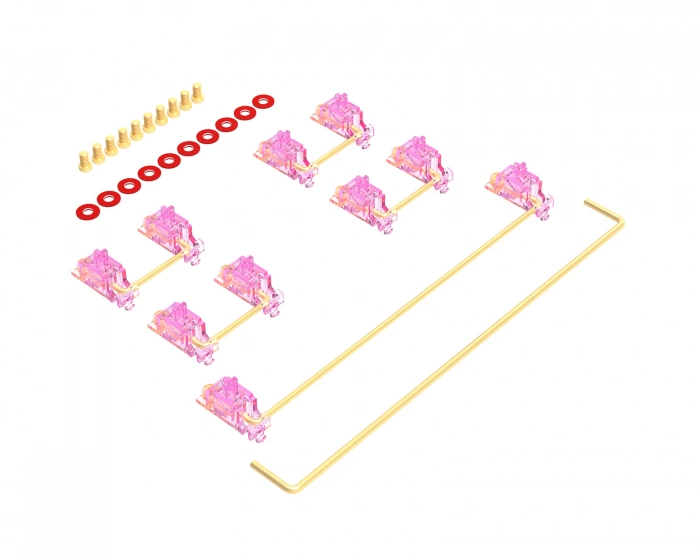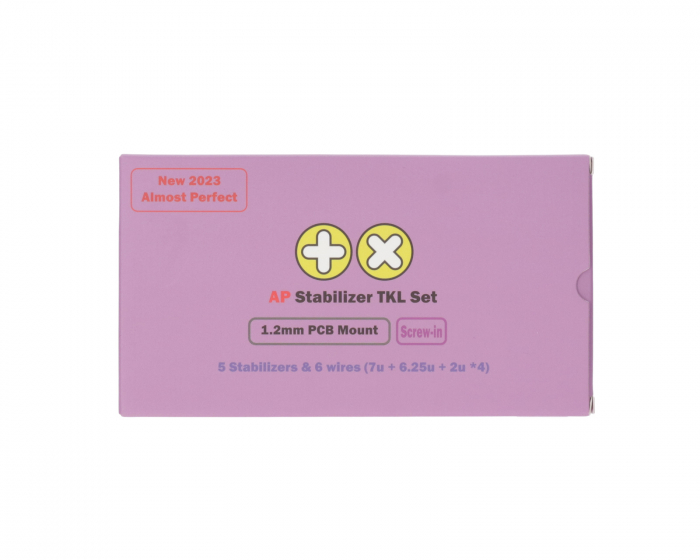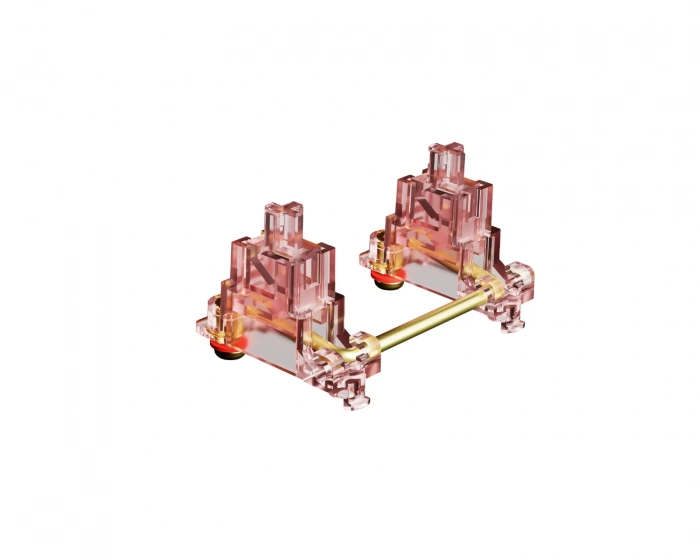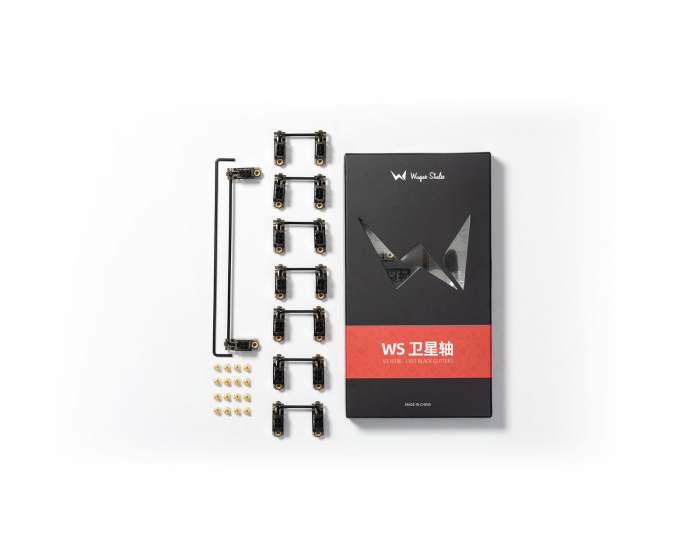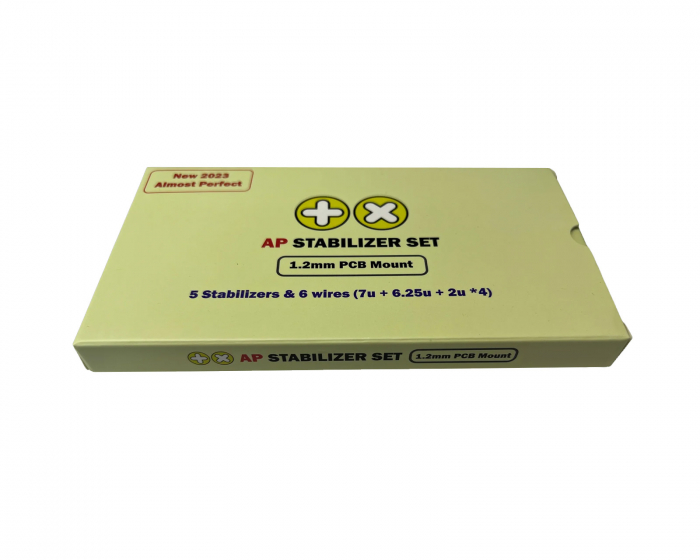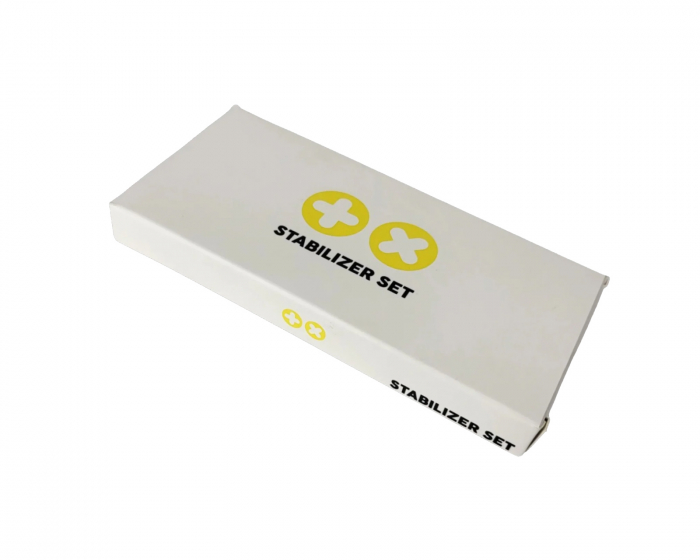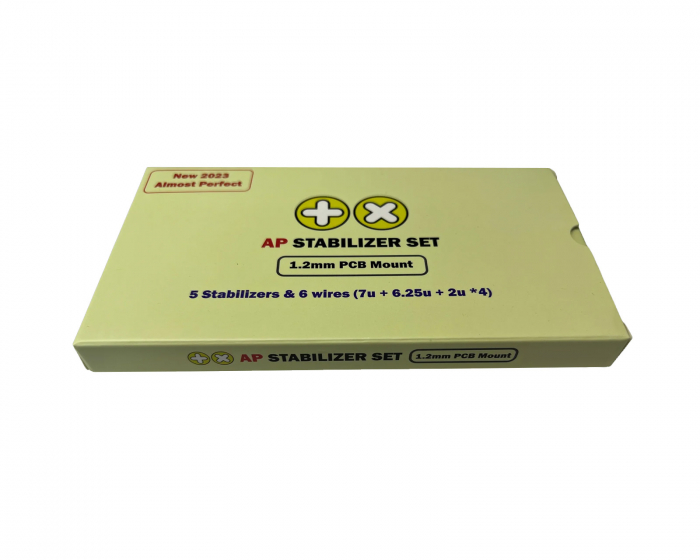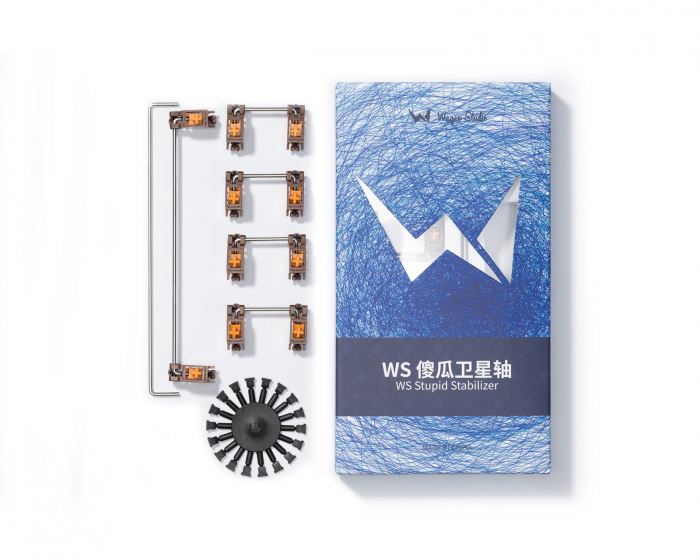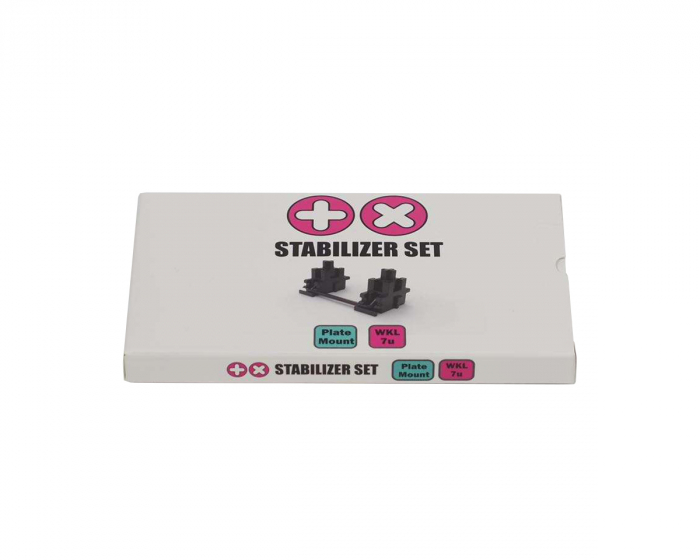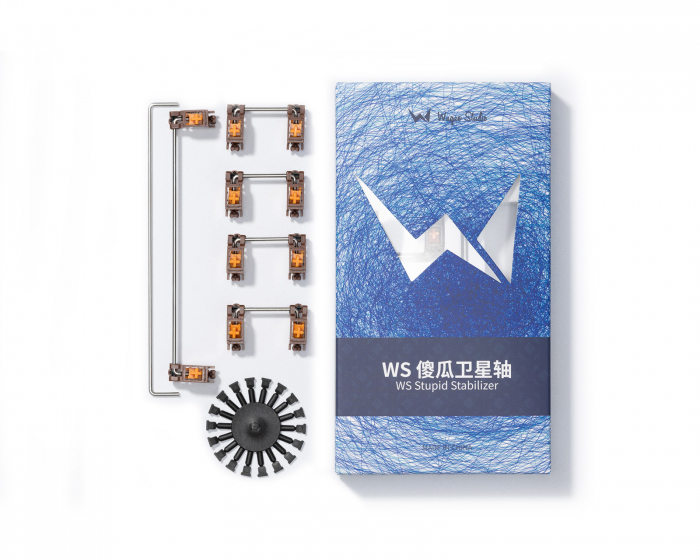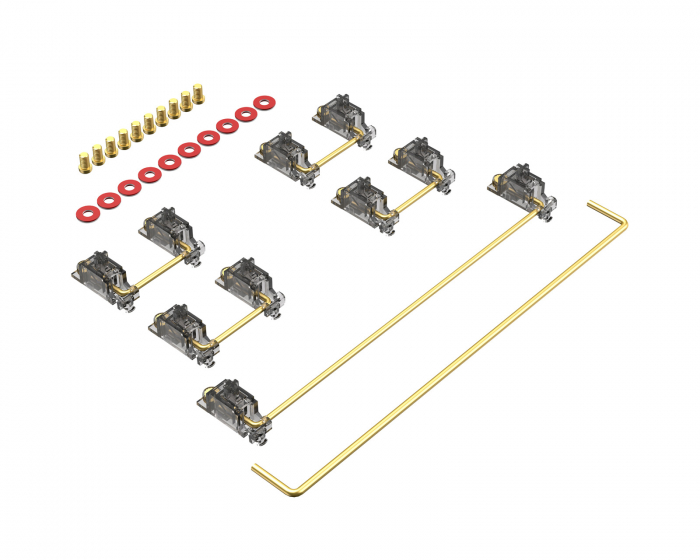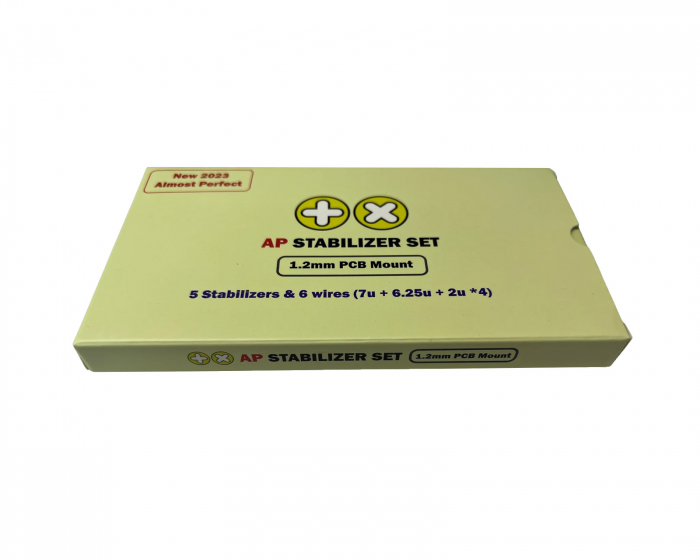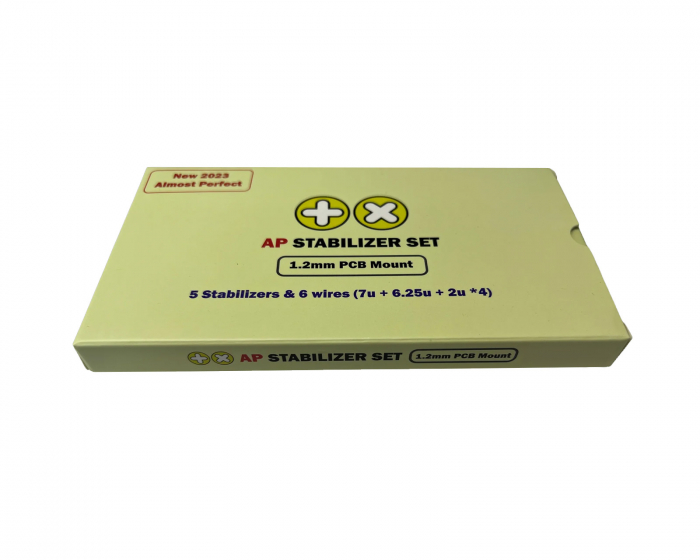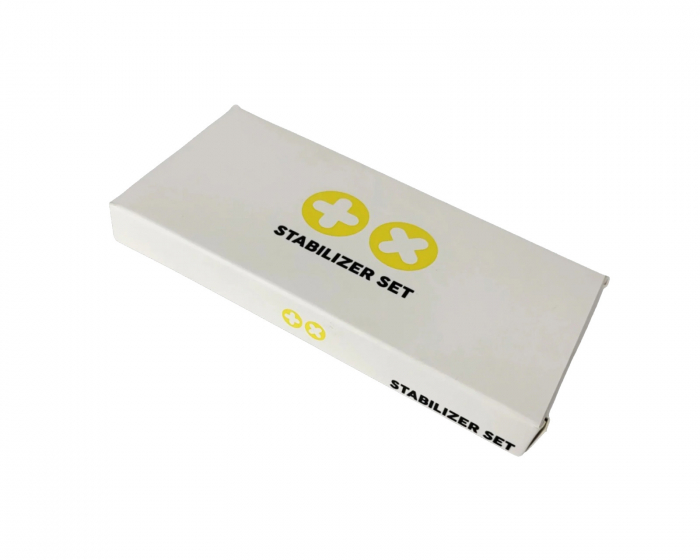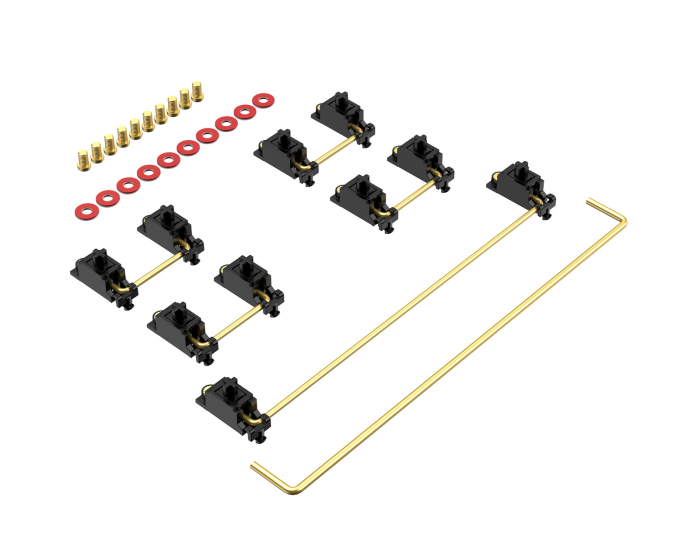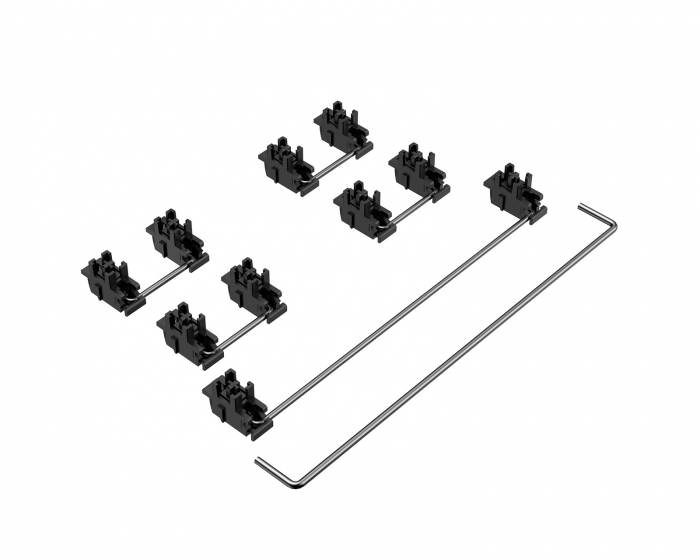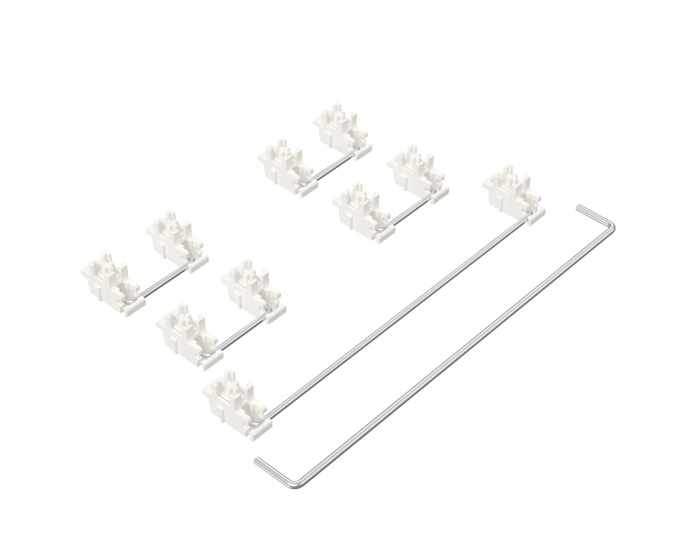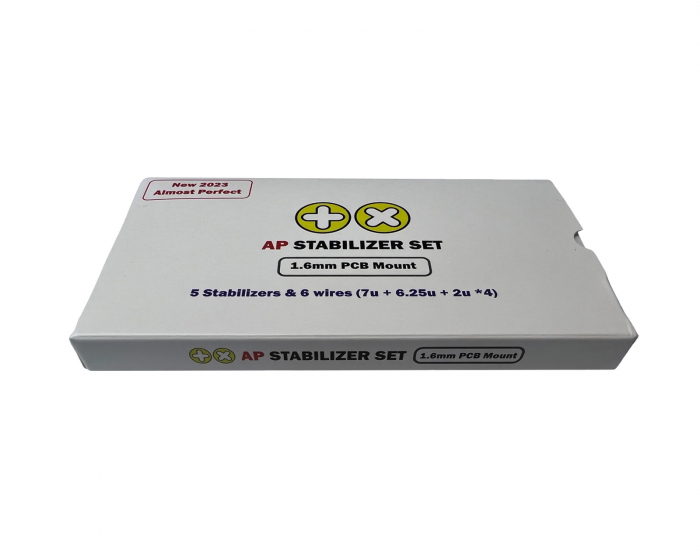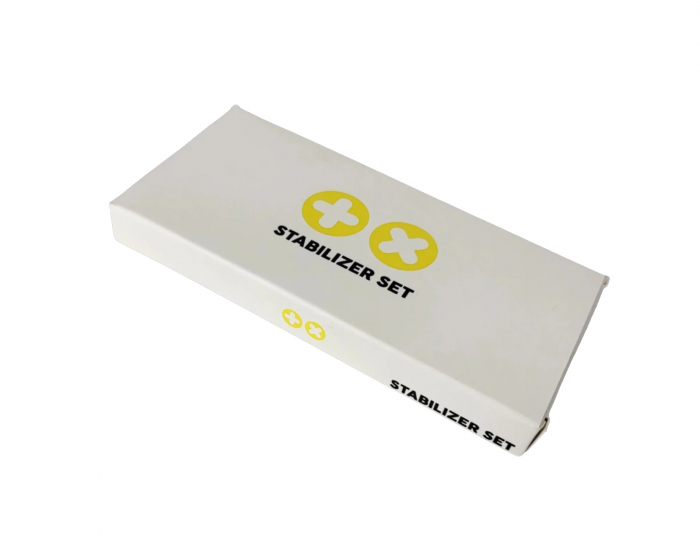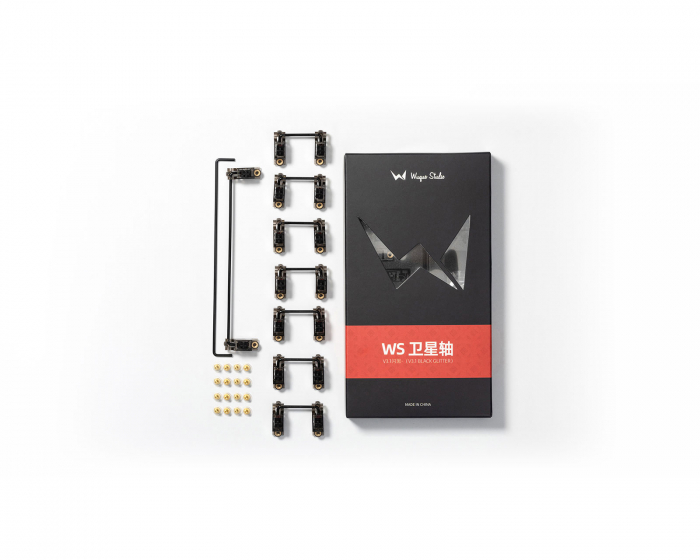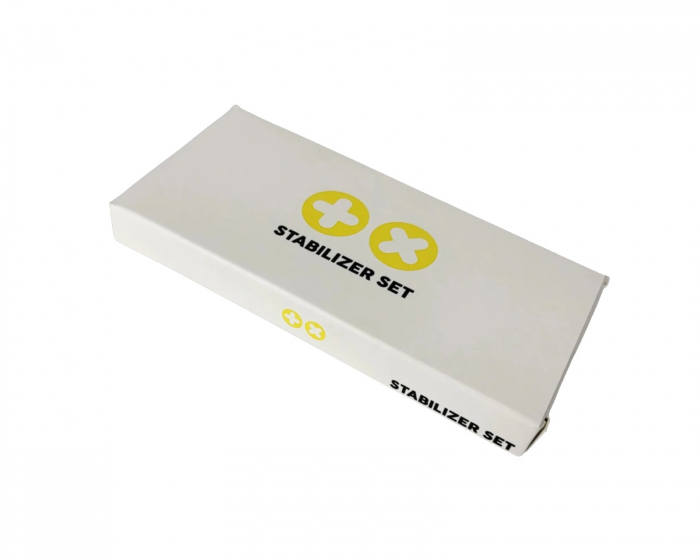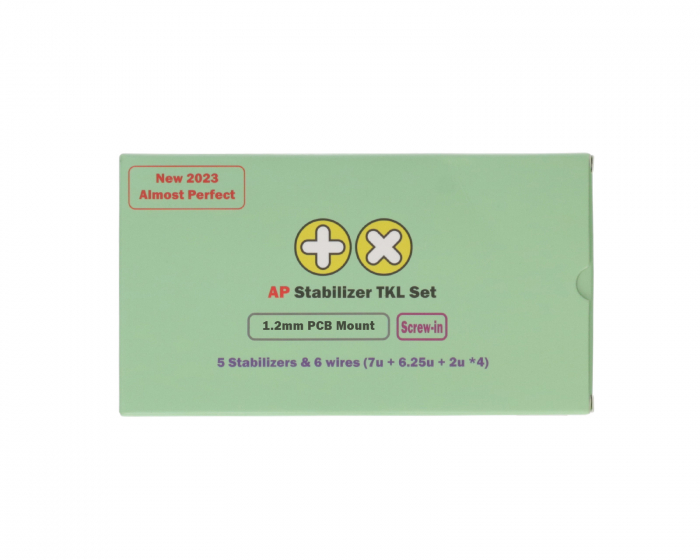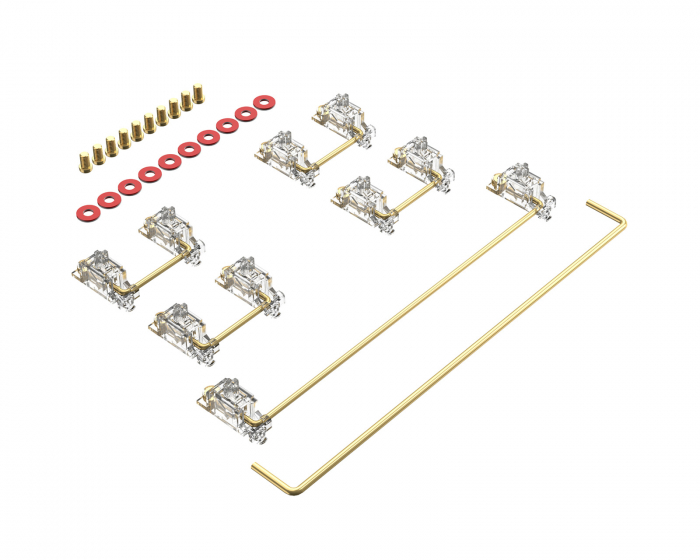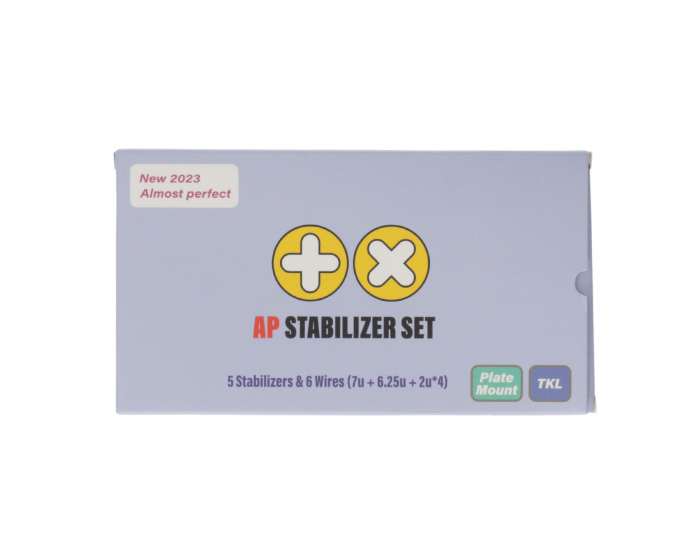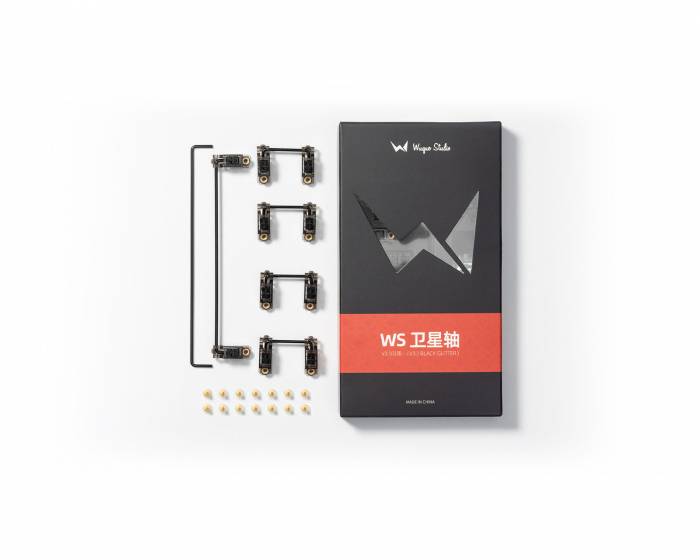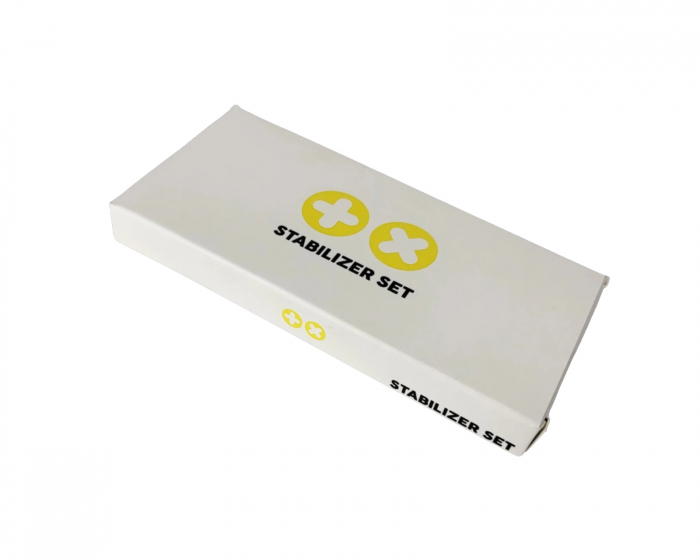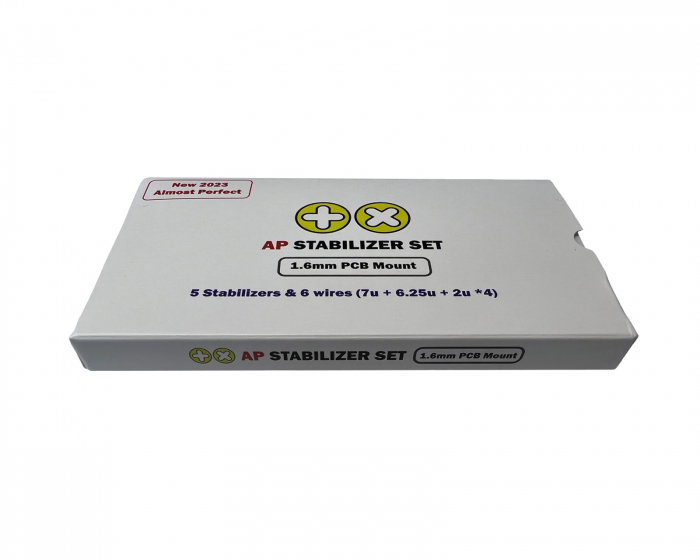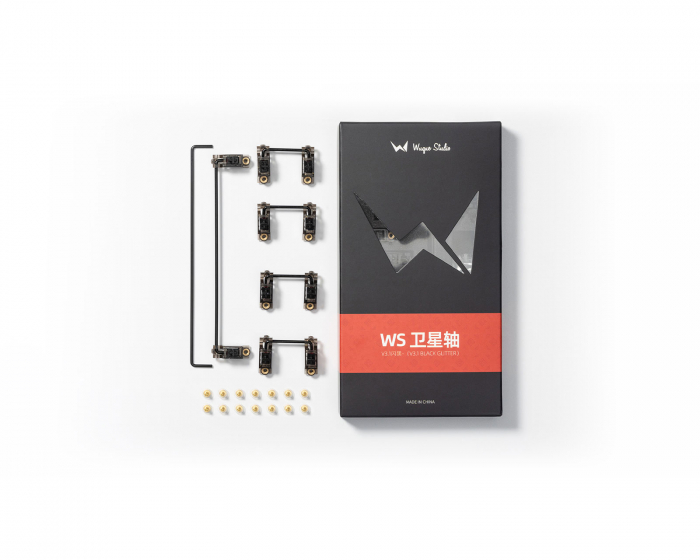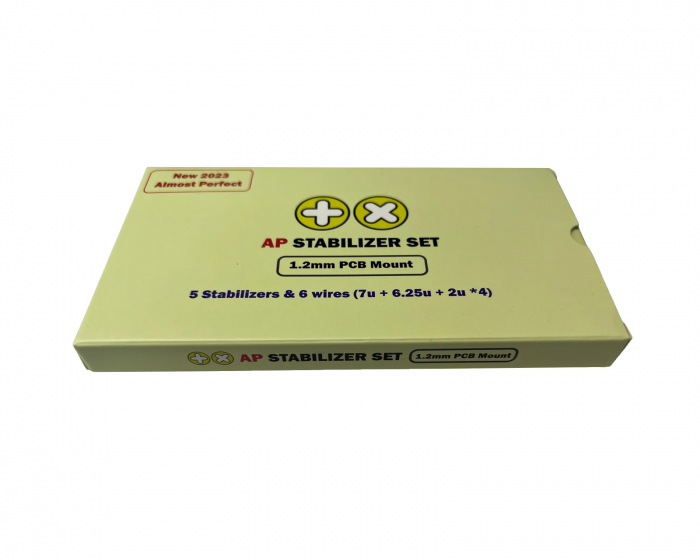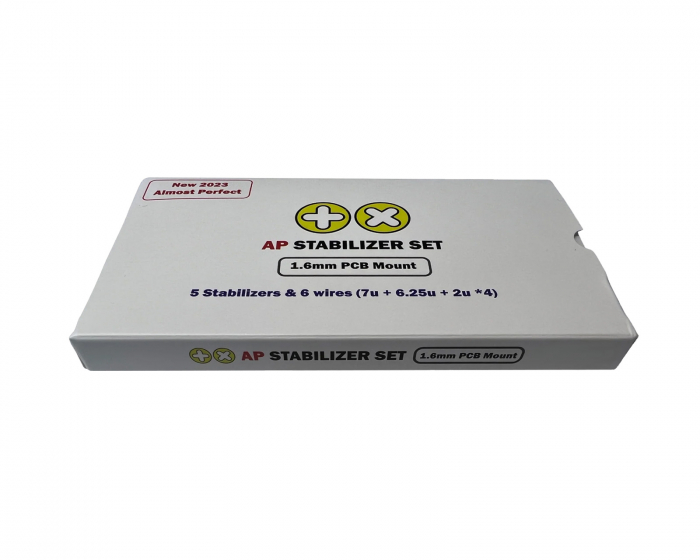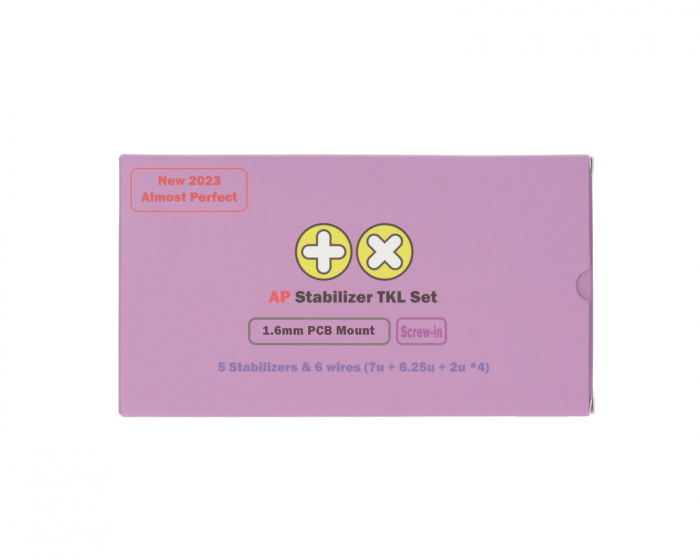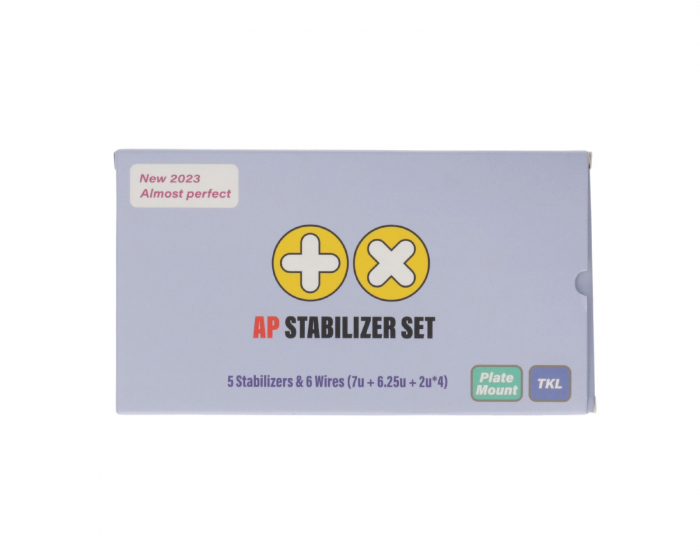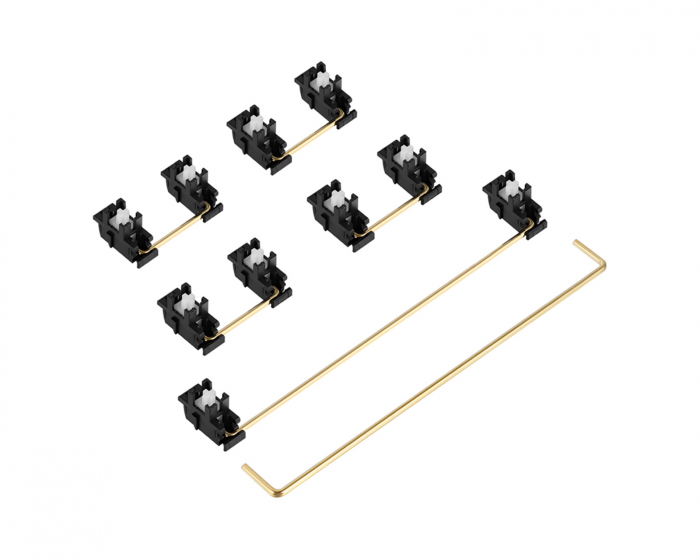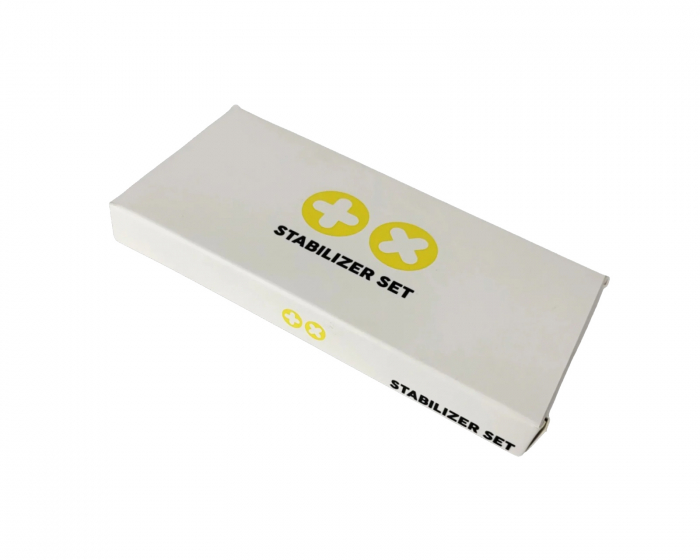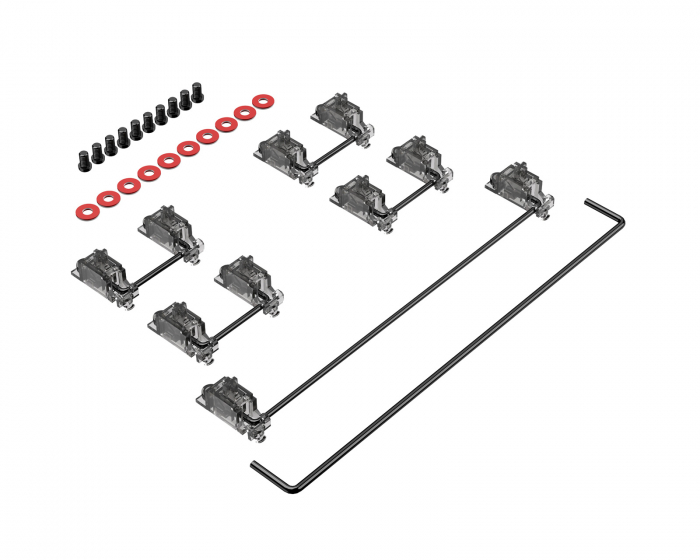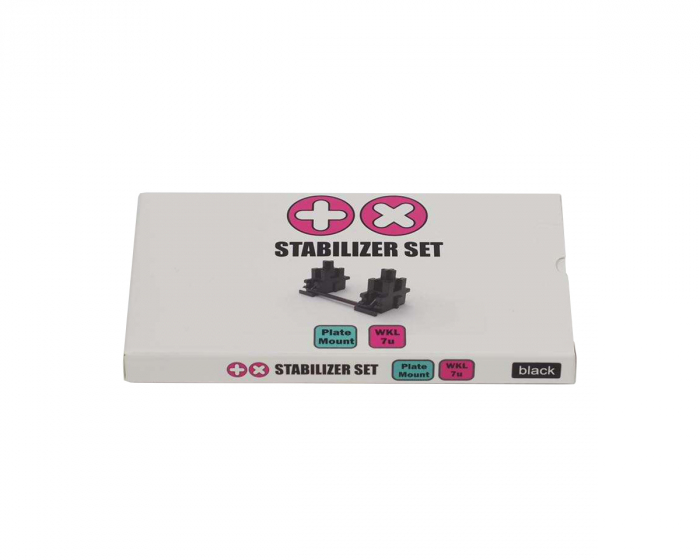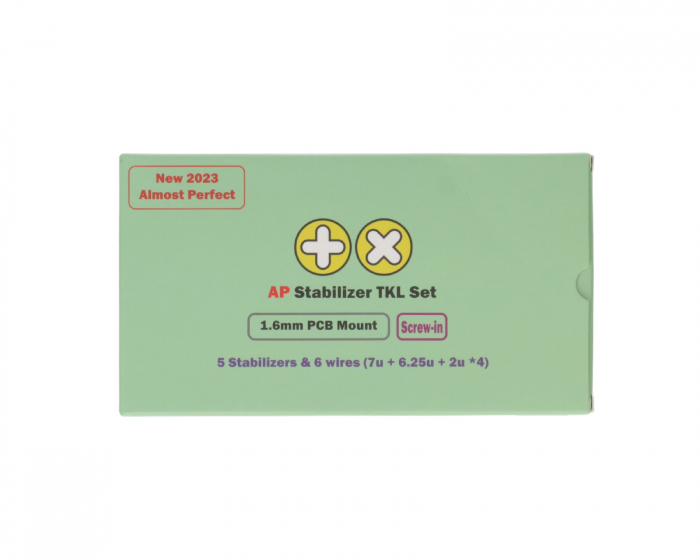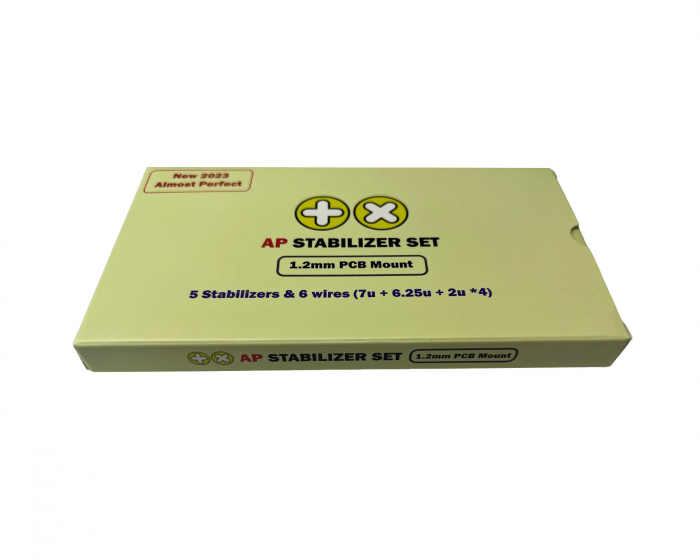Stabilizers
A mechanical keyboard is known for its responsive and distinctive feel with every keystroke. However, some keys, such as space, shift, enter and backspace, are stronger than the others and can feel unstable or "wobbly" when pressed. This is where stabilizers come in. Stabilizers are small mechanisms that are mounted under the larger keys on a mechanical keyboard. Their job is to distribute the force from your finger evenly over the entire surface of the key, resulting in a more stable and smoother press. Without stabilizers, these larger keys would feel bumpy and unstable, which can be very annoying and have a negative impact on your typing ability.
There are two main types of stabilizers: plate-mounted and PCB-mounted. Plate-mounted stabilizers are, as the name suggests, mounted on the keyboard's plate, while PCB-mounted stabilizers are mounted directly on the keyboard's circuit board. Which type is best for you depends on your personal preferences and which keyboard you have. Plate-mounted stabilizers are generally easier to install and remove, making them a good choice for new users. They also tend to provide a more stable and less "bumpy" ride. PCB-mounted stabilizers, on the other hand, can be more susceptible to vibration and provide a much "softer" sound.
Within these two main types, there are also different materials and design choices. Some stabilizers are made of plastic, while others are made of metal. Some have a more complex design with multiple parts, while others are simpler and more minimalist. In addition to adding stability, stabilizers can also affect the sound of your keyboard. Some stabilizers are known to be "rattle-prone", which means they can make an annoying clicking or rattling sound when you type. Fortunately, there are ways to reduce or eliminate this problem, for example by lubricating stabilizers with special grease or by replacing the supplied stabilizers with higher quality alternatives. Choosing the right stabilizers for your mechanical keyboard may seem complicated, but it doesn't have to be. By understanding the basic differences between the different types and materials, you can find the perfect stabilizers that will give you a stable, smooth and satisfying typing experience.
There are two main types of stabilizers: plate-mounted and PCB-mounted. Plate-mounted stabilizers are, as the name suggests, mounted on the keyboard's plate, while PCB-mounted stabilizers are mounted directly on the keyboard's circuit board. Which type is best for you depends on your personal preferences and which keyboard you have. Plate-mounted stabilizers are generally easier to install and remove, making them a good choice for new users. They also tend to provide a more stable and less "bumpy" ride. PCB-mounted stabilizers, on the other hand, can be more susceptible to vibration and provide a much "softer" sound.
Within these two main types, there are also different materials and design choices. Some stabilizers are made of plastic, while others are made of metal. Some have a more complex design with multiple parts, while others are simpler and more minimalist. In addition to adding stability, stabilizers can also affect the sound of your keyboard. Some stabilizers are known to be "rattle-prone", which means they can make an annoying clicking or rattling sound when you type. Fortunately, there are ways to reduce or eliminate this problem, for example by lubricating stabilizers with special grease or by replacing the supplied stabilizers with higher quality alternatives. Choosing the right stabilizers for your mechanical keyboard may seem complicated, but it doesn't have to be. By understanding the basic differences between the different types and materials, you can find the perfect stabilizers that will give you a stable, smooth and satisfying typing experience.

